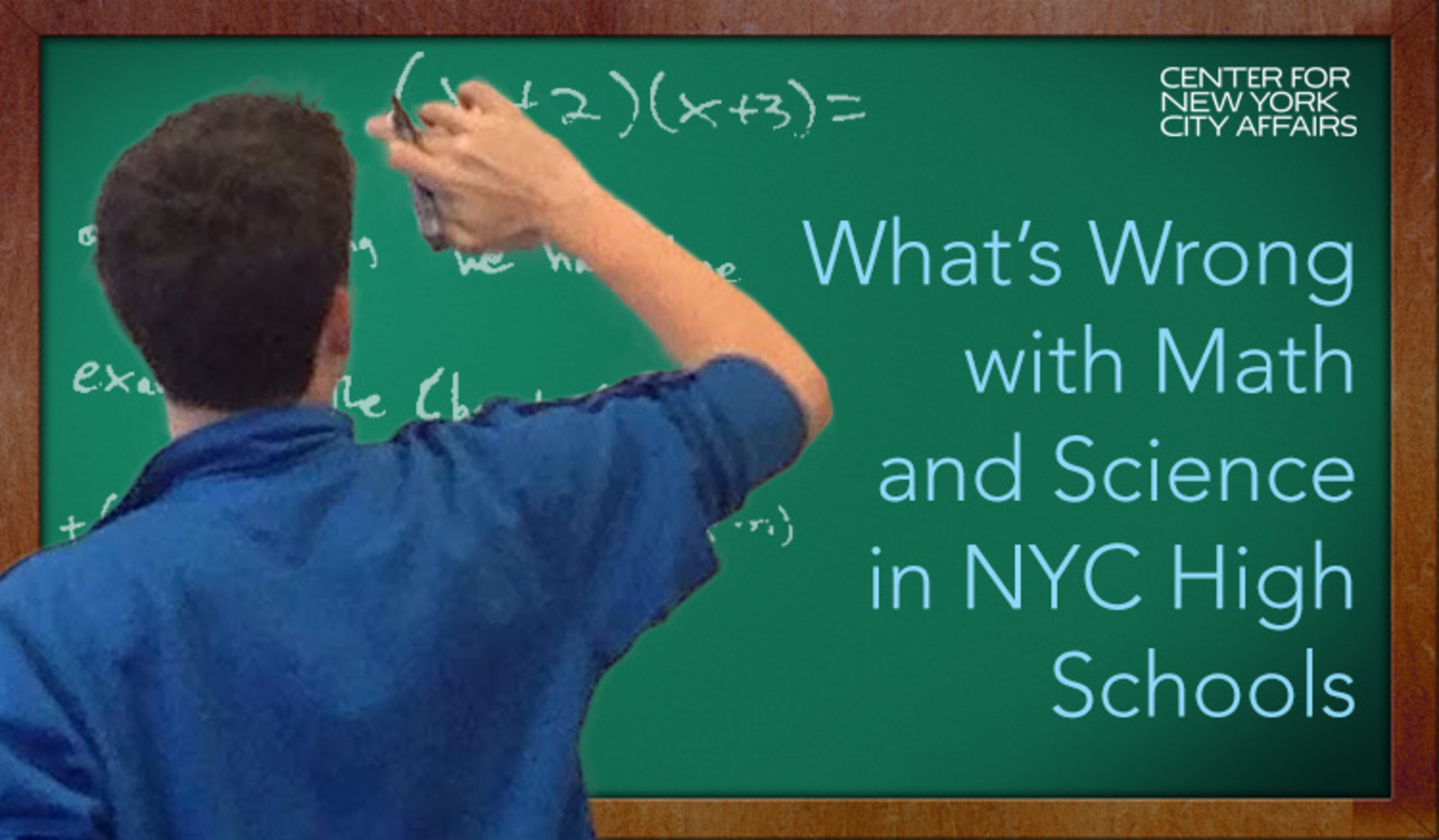Policy brief: What's wrong with math and science in high school?

When Insideschools staff visits a high school we like to hear about students' hopes for the future. Some say they like animals and want to become veterinarians. Others may like to design and build things and want to become architects or electricians. But these and many other occupations are closed to students who don't take chemistry, physics or advanced mathematics in high school.
A new policy brief by Insideschools and the Center for New York City Affairs at The New School examines the importance of a college-prep curriculum in math and science—algebra 2, physics and chemistry—and how many high school students have access to it across the city. The results are sobering: More than 150 of New York City's public high schools—or 39 percent—do not offer a standard college-prep curriculum in math and science; more than 200 schools do not offer a single Advanced Placement or International Baccalaureate class in math or science.
Many of the schools that fall short are among the small schools that proliferated during the administration of Mayor Michael Bloomberg. While these schools have been rightly credited with boosting the city's graduation rate, many do not offer the higher-level coursework that prepares students for college and careers, in part because they focus all their resources on getting students up to grade level to meet the minimum requirements for a high school diploma.
“Some struggling high school students, of course, are late-bloomers. They hit their stride as freshmen, bring themselves up to grade level and then are ready for more advanced coursework in their upper-class years. But while small schools may help such students catch up, with notable exceptions they’re also generally not helping them advance to higher-level coursework—or even offering such classes,” according to the report, written by Insideschools founder, Clara Hemphill and co-authors Nicole Mader and Bruce Cory.
Drawing from the experience of a number of successful schools visited by the staff at Insideschools, the policy brief offers recommendations on how to better prepare students for—and increase their access to—a college-prep curriculum in math and science. Here are some of them:
Younger kids need math specialists too : For most students, 6th grade—the typical start for middle school—is the first time they are taught by a math specialist. At the original KIPP Academy Middle School in the Bronx, which serves students in grades 5–8, children get the benefit of two hours of daily math instruction from a certified math teacher beginning in the 5th grade. By the end of 8th grade, nearly all are well-prepared for high school and many take the algebra Regents exam that year.
More time on task : Beginning in middle school, the traditional structure of the school day allows for just 42 minutes of math instruction—less time than most elementary schools offer. However, some successful schools, including those that serve students arriving with weak skills, find ways to increase the time for teaching math. For example, at Park East High School in East Harlem, freshmen take two math classes each day, one in algebra and one called “math applications,” which helps shore up students’ fundamental skills.
Encourage small schools to share teachers : Too many small schools don’t have the resources to offer high-level math and science classes because they have only a few students who would take them. The Tortora-Sillcox Family Foundation is working with the NMSI (National Math and Science Institute) to create high-level STEM courses that will be open to students from all five schools housed in the Erasmus Hall Campus building. The program will launch in September 2015, and the courses will be taught by teachers from the various schools on campus.
Read the full report: "What’s Wrong with Math and Science in NYC High Schools (And What to Do About It)"
Looking for some fun science and math activities you can do with your own child? See our "Parents Guide to Math and Science" and our Free Programs section.
Please Post Comments